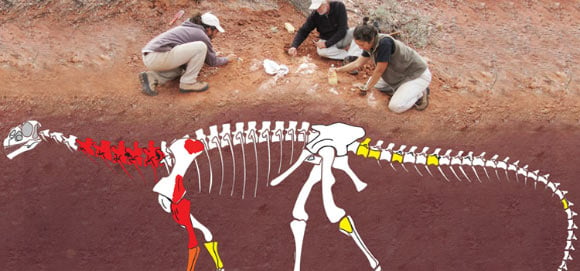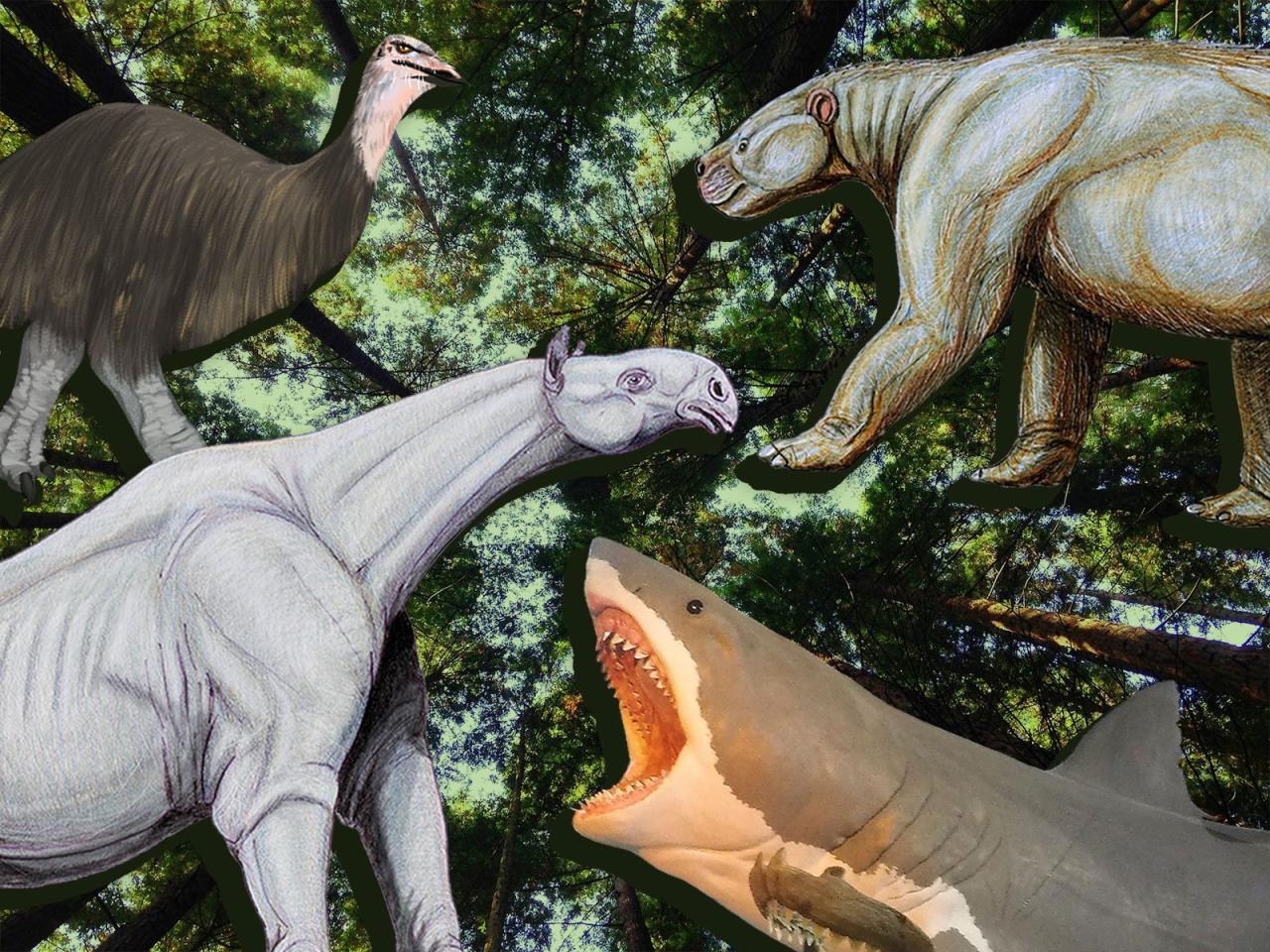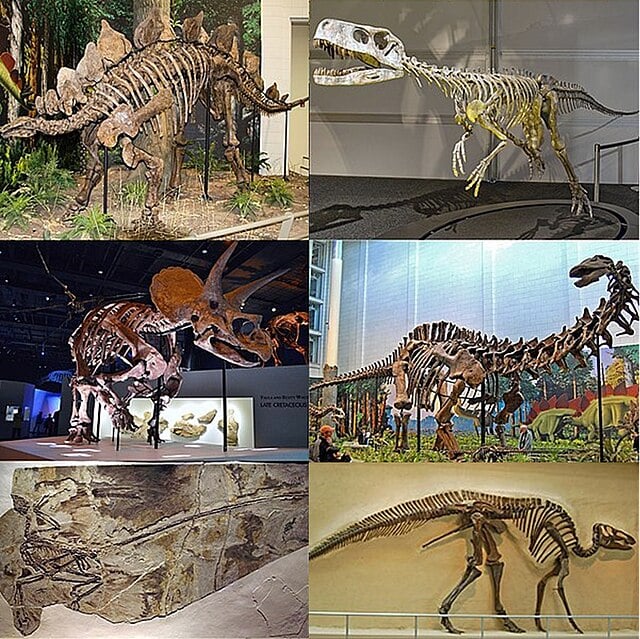A team of Argentinian paleontologists has rewritten the paleontology textbooks by finding that giant, long-necked, herbivorous dinosaurs known as sauropods were present on Earth about 205 million years ago (Triassic period) — a full 25 million years earlier than previously thought.

An artist’s impression of Ingentia prima. Image credit: Agencia CTyS.
The team, headed by Dr. Cecilia Apaldetti from the Institute and Museum of Natural Sciences at the University of San Juan and CONICET, discovered the earliest-known sauropod dinosaur.
Named Ingentia prima, the ancient creature lived in what is now northwestern Argentina at the end of the Triassic period.
At about 23-33 feet (7-10 m) in length and approximately 10 tons in weight, it was about three times the size of the largest Triassic dinosaurs.

Two partial fossilized skeletons of Ingentia prima were recovered from the southern outcrops of the Quebrada del Barro Formation in Argentina’s San Juan province.
“This new species shows a strategy of growth unknown until now and indicates that the origin of gigantism came much earlier than previously thought,” Dr. Apaldetti said.
“Before this discovery, it was thought that gigantism developed during the Jurassic period, approximately 180 million years ago, but Ingentia prima lived at the end of the Triassic, between 210 and 205 million years ago.”

Apaldetti et al unearthed the bone fragments from the neck, tail, fore and hind legs of Ingentia prima. Image credit: Agencia CTyS.
Ingentia prima’s bones displayed cyclical and seasonal growth, according to the team.
“Just as growth seasons can be observed in a tree, the bony cuts in Ingentia prima show that it had cyclical, seasonal growth, but what is striking is that the type of tissue that was deposited in the bones during these periods of growth is different from the other sauropods we knew so far,” said Dr. Ignacio Cerda, a paleontologist at the National University of Río Negro and the Carlos Ameghino Provincial Museum.
“Cyclic growth was common among the primitive Triassic sauropods, but no other species exceeded 10 feet (3 m) in length and 3 tons of body mass.”

“The difference is that the tissue formed in the rest of these sauropods did not have such a rapid deposition speed.”
Ingentia prima had another evolutionary feature that also would have favored its gigantism.
“Cavities are observed in the bones of Ingentia prima, which lightened the weight of this species and would have favored it to acquire a larger size bodily,” said Dr. Oscar Alcober, a researcher with the Institute and Museum of Natural Sciences at the University of San Juan.

“These pneumatic cavities indicate that this new species had highly developed air sacs and a very efficient breathing system, similar to what happens in modern birds, which also helped it to keep its body cool despite its large size,” Dr. Apaldetti added.
Source: sci.news








